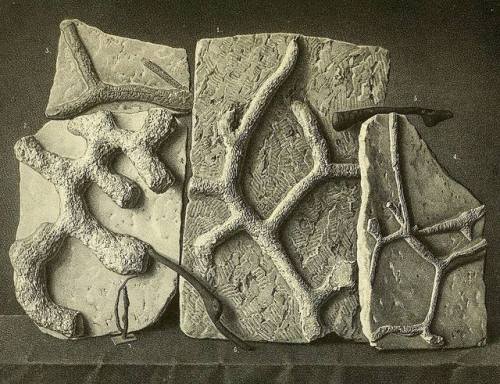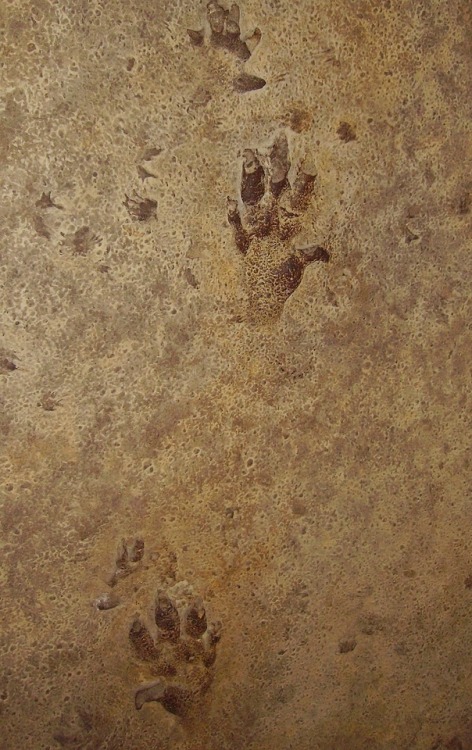Trace FossilsIt’s not only hard parts of organisms that can fossilise, providing a record of their e
Trace FossilsIt’s not only hard parts of organisms that can fossilise, providing a record of their existence, trace fossils can also be produced. Trace fossils provide evidence of organism’s biological activity. There are a range of different trace fossils that can be produced, and today I mention tracks, burrows and excrement. Other common trace fossils include trails, borings, bite marks and root structures.Tracks and footprints are found on the surface of rocks formed when an organism walked across it. This occurs particularly in soft, fine grained sediment and can occur both in terrestrial and marine environments. This type of trace fossil is known as repichnia.In the past animals have burrowed as they do today. These burrows are and were used as places of dwelling, for movement, for protection or for feeding. There are a range of different shaped burrows that may be produced including branched, U-shaped, stacked and vertical. Like tracks burrows are found in soft sand and mud.Organisms must excrete waste, so it makes sense that we’d find fossilised poo when looking for evidence of organisms. This can be classified by size into faecal pellets (<10mm) and coprolite (>10mm). Due to the organic nature of excrement it must be covered quickly before it can begin to decay.I’ve provided a link below to the Virtual Museum of Canada’s site on trace fossils, and whilst seemingly more aimed at children, its informative and I’d recommend it to those new to the subject who’d like to know more.~SAPictures: http://bit.ly/1DyY4Qh by Hermann Krone and http://bit.ly/1z2qohh by BallistaFurther Information:Virtual Museum of Canada: http://bit.ly/1bHV8KyDinosaur footprints by National Geographic:http://bit.ly/1JHxLLyDinosaur Coprolite by National Geographic:http://bit.ly/1EtCb8O -- source link
#fossil#fossils#trace fossil#footprints#fossilfriday#geology#paleontology#burrow#track

